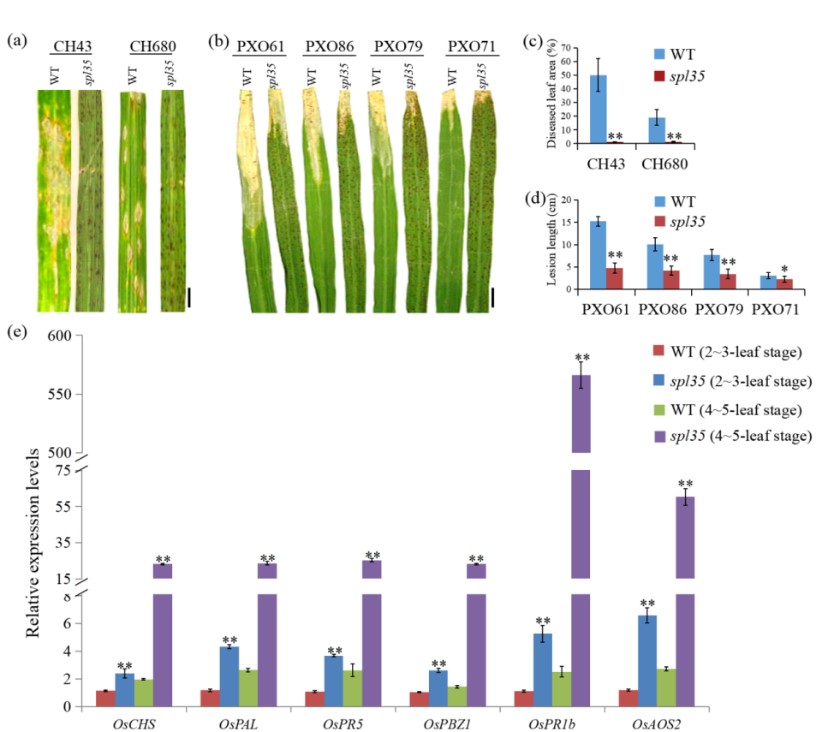Disruption of gene SPL35, encoding a novel CUE domain‐containing protein, leads to cell death and enhanced disease response in rice
作 者:Jian Ma, Yongfei Wang, Xiaoding Ma, Lingzhi Meng, Ruonan Jing, Fan Wang, Shuai Wang, Zhijun Cheng, Xin Zhang, Ling Jiang, Jiulin Wang, Jie Wang, Zhichao Zhao, Xiuping Guo, Qibing Lin, Fuqing Wu, Shanshan Zhu, Chuanyin Wu, Yulong Ren, Cailin Lei, Huqu Zhai, Jianmin Wan.
影响因子:6.305
刊物名称:Plant Biotechnology Journal
出版年份:16 February 2019
doi:10.1111/pbi.13093
文章摘要:Lesion mimic mutants that exhibit spontaneous hypersensitive response (HR)‐like necrotic lesions are ideal experimental systems for elucidating molecular mechanisms involved in plant cell death and defence responses. Here we report identification of a rice lesion mimic mutant, spotted leaf 35 (spl35), and cloning of the causal gene by TAIL‐PCR strategy. spl35 exhibited decreased chlorophyll content, higher accumulation of H2O2, up‐regulated expression of defence‐related marker genes, and enhanced resistance to both fungal and bacterial pathogens of rice. The SPL35 gene encodes a novel CUE (coupling of ubiquitin conjugation to ER degradation) domain‐containing protein that is predominantly localized in cytosol, ER and unknown punctate compartment(s). SPL35 is constitutively expressed in all organs, and both overexpression and knockdown of SPL35 cause the lesion mimic phenotype. SPL35 directly interacts with the E2 protein OsUBC5a and the coatomer subunit delta proteins Delta‐COP1 and Delta‐COP2 through the CUE domain, and down‐regulation of these interacting proteins also cause development of HR‐like lesions resembling those in spl35 and activation of defence responses, indicating that SPL35 may be involved in the ubiquitination and vesicular trafficking pathways. Our findings provide insight into a role of SPL35 in regulating cell death and defence response in plants.
下载链接:https://onlinelibrary.wiley.com/doi/full/10.1111/pbi.13093





